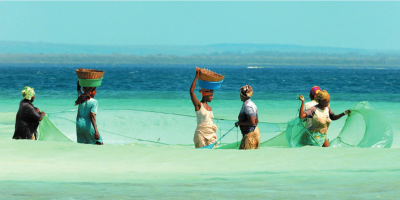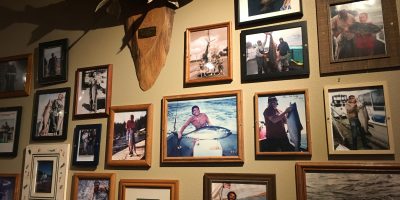Post by: Cassie Maylor, UW Environmental Studies undergraduate student
Welcome to the first blog post on the Bevan Series for sustainable fisheries from the undergraduate seminar class! I am going to give you a brief intro to the series, dive deep with our first speaker Dr. Ray Hilborn, and depict an interdisciplinary view of sustainable fisheries policy and management.
The Bevan Series began it’s 18th year with the theme of Sustainable Fisheries in a Changing Climate. All of the speakers will touch on this in some sense, with talks ranging from the role of fisheries in sustaining human populations, to ocean acidification, to using historical ecology to assess impact on fisheries today. This series should be very exciting and we encourage you all to stay tuned.
Of all of Dr. Hilborn’s accomplishments, the thing that that caught my eye was hearing that in his career he has given his scientific advice to members of Congress in several different outlets. He has briefed legislative actors through events hosted by NGOs, and as recently as October of 2017 he gave testimony at a Senate hearing to inform Senators of his expert view on the topic of reauthorizing the Magnuson-Stevens Fishery Conservation and Management Act (MSA). This more formal outlet takes place at the Senate Office Building in Washington DC in front of a large group of Senators. They hosted a panel of four experts including Dr. Hilborn seeking their view on the MSA in order to inform their decision of whether or not to reauthorize this piece of legislation.
My understanding of the MSA came from a stock status report from NOAA assessing 2016 stocks. This document is short, clearly defines overfishing, overfished, and rebuilding which is key to understanding some of the MSA’s management strategies.
 Loading...
Loading...
The MSA outlines a purpose for continued and enhanced food access, job creation, recreational opportunities, and healthy habitat. Overall, from Dr. Hilborn’s talk, I have gathered that the Magnuson-Stevens Act does the job it is meant to do, but it has some limitations. Namely two points were made:
Optimum yield: the amount of fish which will provide the greatest overall benefit to the nation, particularly with respect to food production and recreational opportunities, and taking into account the protection of marine ecosystems.”
Dr. Hilborn makes the point quite clearly at the offset that the term ‘optimum yield’ is vague and does not demonstrate something that can be directly measured, and is therefore not helpful if fisheries are going to be sustainably managed. In addition to poorly defined terms, Dr. Hilborn discussed the fact that the MSA stipulates the management of U.S. fisheries, but there are many ways to go about this management. In other words, there can be different managers and management strategies that dictate how each U.S. fishery operates.
Dr. Hilborn’s message to Congress:
Good job boys, US fish stocks are increasing”
This was possible and achieved because NOAA was funded in part to end overfishing and rebuild overfished stocks. Thus, this demonstrates that science-based management approaches are keeping fish stocks above maximum sustained yield targets. Something the MSA has been successful at doing is reducing the ‘race to fish’ because total allowable catch rules have been rationalized through science-based management of fisheries.
A male sockeye salmon (Oncorhynchus nerka) catches its breath after stranding itself in very shallow water, Hanson Creek, Lake Aleknagik, Bristol Bay, Alaska, USA 4th August 2008 | ©Nick Hall
Dr. Hilborn made two main points during his testimony to Congress. The first one, listed above, is that science-based management is the key. He made his testimony orally at the Senate committee hearing on the “Reauthorization of the Magnuson-Stevens Fishery Conservation and Management Act: Fisheries Science” hearing and additionally provided clear and descriptive written testimony for the record. His second point was on the topic of the proposed Pebble Mine in Alaska.
One of Washington’s Senators is on this committee, Sen. Maria Cantwell, asked several questions of the panel, including one where Dr. Hilborn addresses the Pebble Mine project being proposed in Alaska’s Bristol Bay, which supports the world’s largest salmon run. The Bristol Bay mining project is insane when you think of how productive that salmon stock is, and how much damage could be done. This kind of mining project would retain toxic chemicals and contaminated sediments behind reservoirs, and this area is in a seismic and volcanic zone. As Dr. Hilborn says:
[It] would be just crazy [to build] a big mine in the middle of all that. It’s a serious threat to the sustainability of [salmon]”. – Dr. Hilborn’s Testimony
I encourage you to check out Dr. Hilborn’s testimony here if this is a topic you’re interested in — you can jump to minute 42 for the beginning of Dr. Hilborn’s five minutes of testimony and continue watching to hear the senators ask questions of the panel.
From my perspective, Dr. Ray Hilborn has great experience and exposure in the fisheries science arena and he is an expert in his field. His testimony in Washington DC added to the Senate’s decision on reauthorizing the MSA, and will continue to inform the field of sustainable fisheries well into the future.
Credit: Wild Salmon Center
Relevant further readings:
Costello et al. “Can Catch Shares Prevent Fisheries Collapse?”
Can catch shares prevent the collapse of fisheries? This article concludes that fisheries that implement catch shares have the potential to alter the future of global fisheries.
This article argues that despite our massive fishing industries and all other forms of gathering food from waters, there is still a vast amount of under exploited fish and other species.
Melnychuk et al. “Effects of Management Tactics on Meeting Conservation Objectives
This piece analyzed six management tactics with the hypothesis that one might emerge as better than the rest. They analyzed groundfish stocks in Alaska, British Columbia, and the US West Coast and found that a variety of management measures can be used to ensure that fish abundance and harvest are more conservative than management targets.
![]() #Bevan18
#Bevan18








Julia
Hey Cassie-
Thanks for this post starting off the Bevan blog! I’m with you on the first part, but I think Ray is also questioning whether MSA can allow effective management of stocks, and the people fishing them, into the future. I was struck by his open-ended question about whether local fishermen should be specialists – as they are now – or be allowed (it would take a change in the management strategies we use) to go back to being generalists.
Given Malin Pinsky’s talk yesterday where he showed us small local fisheries that fish “low diversity” go extinct, I’m thinking Ray may have a good point. What do you think?
David French
This issue has also been discussed in terms of economic resiliency at the community scale in Alaskan fisheries (https://www.nature.com/articles/ncomms14042).
Similar to Malin’s example of the >65 ft boats and their ability to track target fisheries as they migrate to new regions, those Alaskan communities with the ability to fish for multiple species have greater resiliency in the face of variable fish stocks, buffering economic variability over time. With a range of uncertain future scenarios, the best approach seems to conserve a diversity of options in terms of species, gear, permits, etc. Nice blog post!